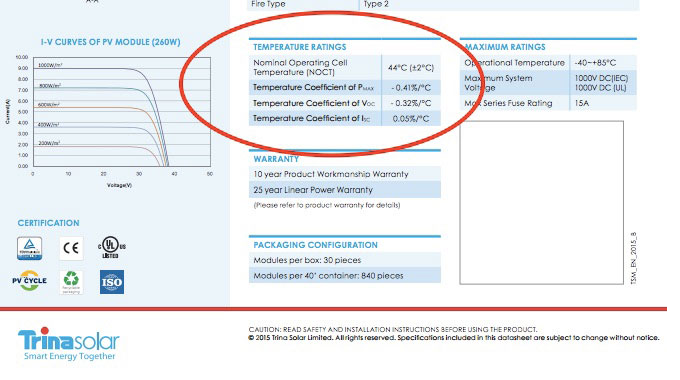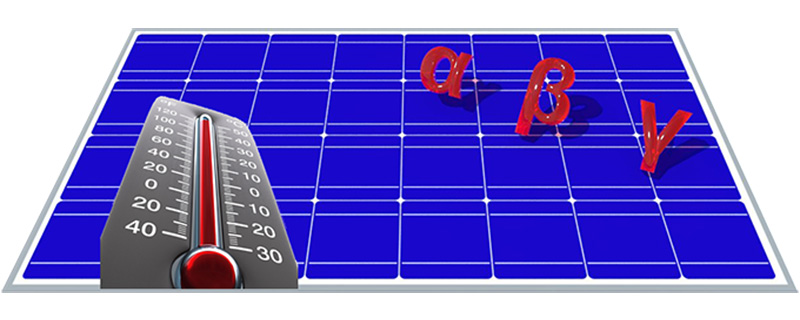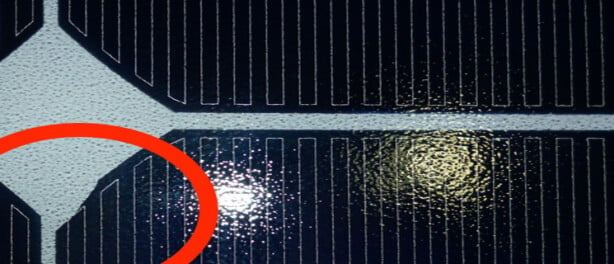As we all know, the smooth performance of a solar PV module is strongly geared to the factor temperature. Higher than standard conditions temperatures can actually mean losses in maximum output power which is why we would usually aim at optimally cooling the modules and this regard the assembled cells.
This article is a basic introduction to the temperature coefficient of a solar module, its significance and calculation. Before explaining the measurement of temperature coefficients, we will first look at the definition of temperature coefficient.
What is the temperature coefficient of a PV module?
Each solar cell technology comes with unique temperature coefficients. These temperature coefficients are important and the temperature of the solar cell has direct influence on the power output of a solar PV module.
Once the temperature a solar module operates in increases, the power output of the solar module will decrease.
Crystalline solar cells are the main cell technology and usually come with a temperature coefficient of the maximum output power of about -0.5% / degree Celsius.
The rated power as generally indicated on the module’s label is measured at 25 degrees Celsius, and with any temperature increase above 25°C you have to take into account power losses of 1% for every 2°C increase.
Most installed solar modules in sunny countries easily reach higher temperatures than 25°C. In fact, temperatures of 50°C and above are easily reached.
Calculation of the temperature coefficients
We will take here a solar PV module of Trina Solar as an example, and calculate the power loss when this type of solar module is installed in a region with a hot climate.
We pick their currently highest power polycrystalline silicon 60cell module: the 260W. Temperature coefficient of the maximum output power (Pmax ) at STC is -0.41%/°C.
Now, let’s have a look at an example if the solar cells inside a solar module reach 65°C. With the solar module reaching 65°C, the power loss of this module is:
- 65°C – 25°C = 40°C, which is the temperature difference between the module’s Pmax at STC and the hypothetical example temperature of 65°C reached by the cells
- 40°C x -0.41% = -16.4%, which means that the module loses 16.4% in power output when the cells reach 65°C
Solar module power loss: -16.4% x 260W = 42.64W. The maximum power this module will operate at 65°C is: 217W.
As you can see in the sample screenshot above, besides the temperature coefficient of Pmax there are also other temperature coefficient ratings for solar PV modules. These are:
- temperature coefficient of the open circuit voltage (Voc), which measures the changing open circuit voltage values of the PV module when the temperature increases (or decreases)
- temperature coefficient of the short-circuit current (Isc), which measures the changing short-circuit current values of the PV module when the solar cell temperature increases (or decreases)
Solar module testing and temperature coefficients
Each type of solar cell has its own temperature coefficient. During this measurement, the temperature coefficients of current (α), voltage (β) and peak power (δ) are determined.
For this test, the following equipment setup is needed:
- a radiant source (usually solar simulator)
- equipment to vary the temperature of the solar module
- accurate temperature monitoring
- equipment to measure the voltage and current of the solar module
The resulting coefficients are applicable at the same irradiance level at which the measurement was made.
For more material on this subject, the international standard IEC 60904-10:2009 Photovoltaic devices – Part 10: methods of linearity measurement provides for measurement methods related to solar PV module temperature coefficients and different irradiance levels.
Wondering how temperature coefficients affect your module performance in real-world conditions? Let’s discuss your testing setup or results — our experts can help interpret the data and optimize your module selection. Talk to our experts →








Mohammed Elnaggar
on 08 Jan 2024Kavitha Paulsamy
on 24 Feb 2022owen
on 25 Jun 2020Suthaggar
on 18 May 2020Ali
on 22 Mar 2018maher al qadhi
on 04 Mar 2018Rudy Puister
on 29 Aug 2018Eric Scherzinger
on 21 Jan 2018Automic
on 15 Feb 2019Gavin
on 09 Mar 2018Automic
on 15 Feb 2019SolarRat
on 30 Oct 2018Muhammad shafiq
on 02 Nov 2017leon
on 26 Oct 2016